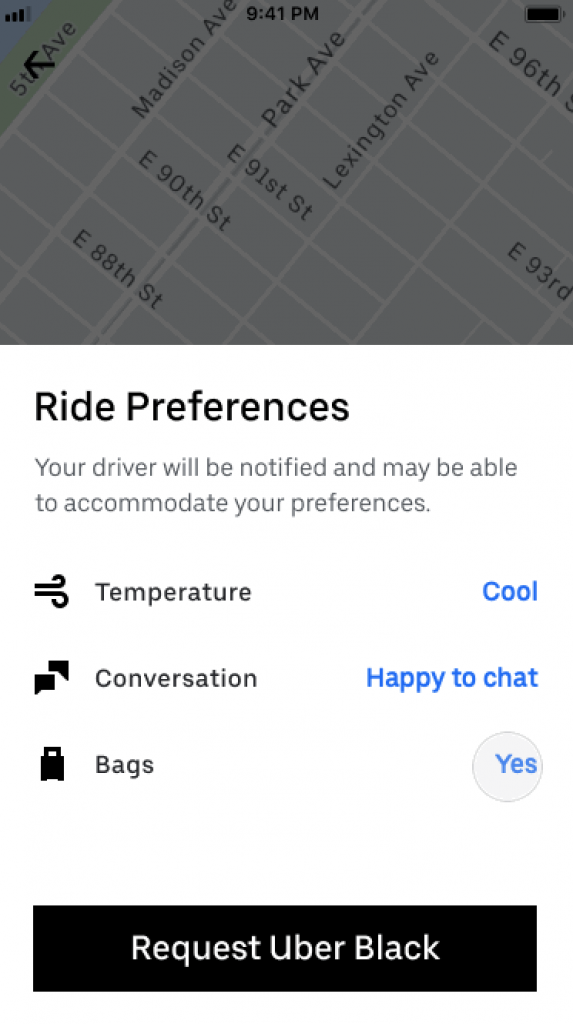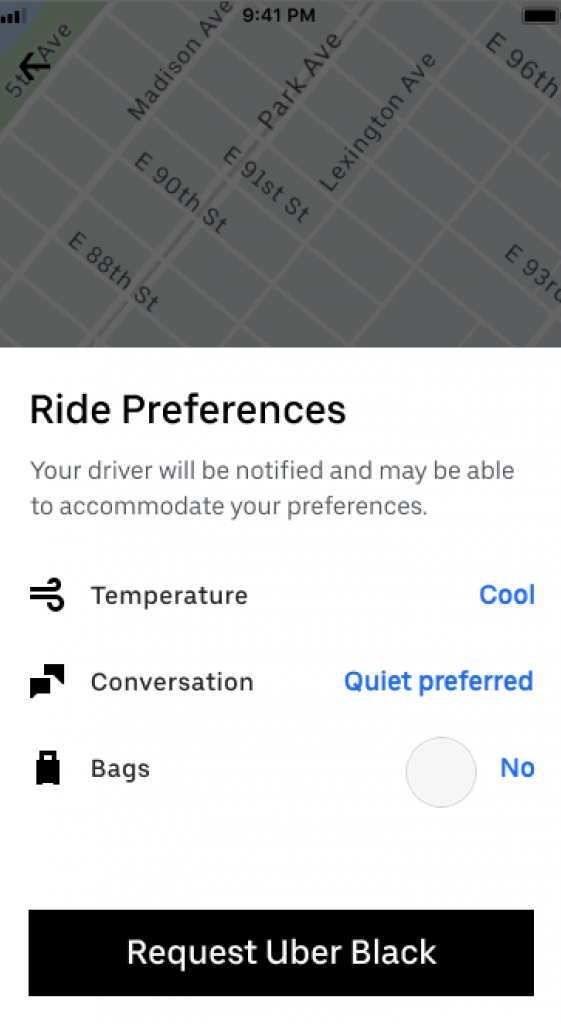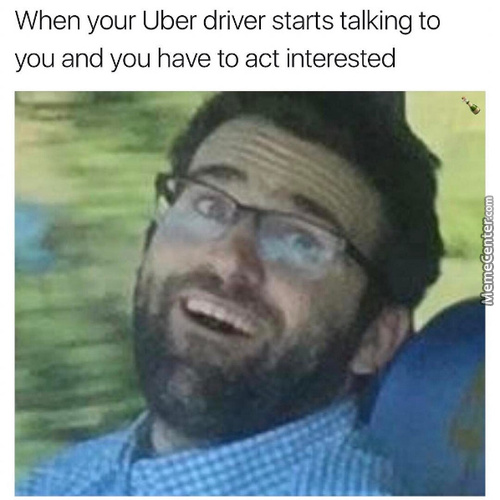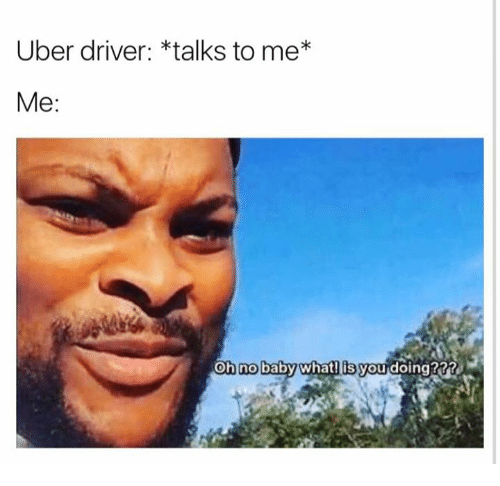‘Quiet Ride’ in Uber: Technology Defeats Small Talk.
In May 2019, Uber announced that they have added the quiet ride feature. People who call an uber can now make a preference for the level of conversation they want to have with their driver: prefer quiet, or let the driver know you are willing to have a conversation. This was introduced as part of offerings for their higher-class service Uber Black. (Hawkins)
Could this update influence the relationship between drivers and passengers, and could it be a sign of how Uber treats and sees its drivers?
Algorithmic management & dehumanization of drivers
Algorithm is the boss in Uber. (Simonite)It matches driver to passenger, adjusts surge prices, dictates the routes to take, calculates star ratings of drivers, and collects a good amount of data from drivers and passengers. (Lekach)
In Uber,the algorithm “has the role of a digital manager, that endorses discipline: including possible termination from the platform and bonuses” (Zwick, 685) However, drivers have complaints about having algorithm as their boss. A study found being managed by algorithms makes the drivers feel; constantly under surveillance, lack of transparency because they don’t know how the algorithm works in detail, de-humanization and isolation because they are only in contact with the application with no human contact. (Henrifdsson)
The authority of algorithm has become so powerful that Uber drivers have been trying to fight it. For example, Uber drivers at an airport collectively stop working to create a price surge and when the fare is high enough, they turn their apps back on. (Karlis)

Quiet ride as an affordance
Since drivers have complaints about the power of algorithmic and digital management, it’s important to look at ‘quiet ride’ from perspective of affordances: what does the software enable or encourage?
Features in an app are never only features, “they are “communicational actors”, because they produce meanings and meaningfulness”. (Bucher & Helmond, 2) This new feature not only offers a way to select a type of ride, but it influences the relationship between driver and passenger. “What mobile media afford has nothing to do with a specific button, but rather what kinds of communicative habits and practices they enable and constrain”. (Bucher & Helmond, 12)
To think of what kind of a relation this ‘quiet ride’ offers should be viewed from a point of ‘encouragement’ in affordances. “Artifacts encourage when they foster, breed, and nourish some line of action” (Davis & Chouinard, 243).Adding the quiet ride feature encourages an action that was not common to think of before, as demanding a driver to be quiet would result in a passenger getting a low rating.
Is it all for high ratings?
Before the quiet ride feature, the type of communication depended on both parties and it was based on meeting on a common ground. Uber even sent mails to drivers on what they could do for positive ratings, such as offering passengers snacks or topics to talk about. (Simonite)
Drivers have been performing pleasing acts to riders, using conversational attempts, offering snacks, having eye contact to understand preferences: which can be called, “emotional labor”’: actions service providers perform by containing their emergent emotions to present a welcoming environment for customers, In Uber, drivers performed this labor in exchange for ratings instead of tips. (Rosenblat & Stark, 3775).
In return for the emotional labor, passengers had to continue conversations to keep their ratings high, even if they did not want to talk. (Paul) As many riders were unhappy about being forced into conversations by an uber driver when they wanted silence, which even created a series of memes, this feature might be useful to them.
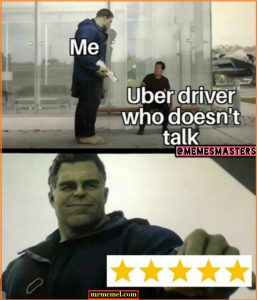
One uber rider explained how this situation was difficult for him before the introduction of the feature:
“I’ve made it a policy to continue a conversation when the driver initiates it and my score since then has gone up considerably. Still, I wish my preference for a silent ride didn’t have such an initial impact on my score.” (Paul)
While some uber drivers are happy (Sini) some believe it’s another step towards dehumanizing them: “It feels like they are just turning us into robots” (Paul).Arguably, Uber is discouraging the only human contact of drivers –socially interacting with passengers- which might be in line with the idea of dehumanization.
Uber drivers: entrepreneurship to exploitation
As Uber introduces this new feature, they continue to re-define the roles of actors in its platform. At the beginning, Uber promoted flexible employment, freedom, and entrepreneurship, through slogans such as: “Freedom pays weekly”. (Rosenblat & Stark, 3761).
But drivers acknowledge the change in their status. Some believes Uber sees them as a problem to deal with until all Uber’s are autonomous, while others believe Uber sides with customers rather than drivers, and complain they are constantly in contact with a faceless app: “Uber treats us like crap”. (Sainato)
Now, drivers are not entrepreneurs. They can be told to shut up or speak. They perform strict duties to keep star ratings high to keep their job. “The labor that Uber drivers do is shaped by the company’s deployment of a variety of design decisions and information asymmetries via the application to effect a “soft control” over workers’ routines” (Rosenblat & Stark, 3761).
As they determine if a driver keeps or loses its job through star ratings, this feature gives more authority to passengers. “Many gig platforms transform the consumer-sourced data into reputational metrics that are connected with workers’ employability” (Chan, 2051) In Uber’s case, star ratings determine driver’s employability.
The boundaries of communication are strict in quiet mode, driver will have to obey the pre-determined social interaction set by the passenger. “In the driver rating system offered to riders, passengers are empowered to act as middle managers over drivers, whose ratings directly impact their employment eligibility”. (Rosenblat & Stark, 3772).
What does the future hold?
While the quite ride feature may have different consequences for different parties, it should be discussed in relation to how it influences social interaction during an Uber ride. This featurecould also indicate how uber treats and sees its workers.
Recently, after protests by Uber drivers in order to be reclassified as ‘employees’ and not independent ‘contractors’ (Dickey) California passed the AB-5 law requiring Uber to give more rights and re-classify them as employees. (Campbell) However, the relationship between drivers and Uber might be blurry in the future, since Uber argues that drivers are not the core of its business (Hawkins)and believes that driverless cars are the future of transportation. (Price)
Apparently, Uber will have to make changes to how it classifies and treats its drivers. Although currently, a technology built on the idea of ‘sharing’ couldn’t be more alienating to its drivers.
Works Cited:
Bucher, Tania, Helmond, Anne. “The Affordances of Social Media Platforms.” The Sage Handbook of Social Media. London and New York: Sage Publications Ltd, 2017. 1-41.
Campbell, Alexia Fernández. “California Just Passed a Landmark Law to Regulate Uber and Lyft.” Vox, Vox, 18 Sept. 2019, https://www.vox.com/2019/9/11/20850878/california-passes-ab5-bill-uber-lyft.
Chan, Ngai Keung. “‘Becoming an Expert in Driving for Uber’: Uber Driver/Bloggers’ Performance of Expertise and Self-Presentation on YouTube.” New Media & Society, vol. 21, no. 9, Sept. 2019, pp. 2048–2067, doi:10.1177/1461444819837736.
Davis, Jenny L., Chouinard, James B. “Theorizing Affordances: From Request to Refuse.” Technology & Society. Vol 36(4) (2016): 241-248.
Dickey, Megan Rose. “Uber and Lyft Drivers Are Not Letting up on the Fight for AB-5 and a Union.” TechCrunch, TechCrunch, 27 Aug. 2019, https://techcrunch.com/2019/08/27/uberand-lyft-drivers-are-not-letting-up-on-the-fight-for-ab-5-and-a-union/.
Hawkins, Andrew J. “Uber Argues Its Drivers Aren’t Core to Its Business, Won’t Reclassify Them as Employees.” The Verge, The Verge, 11 Sept. 2019, https://www.theverge.com/2019/9/11/20861362/uber-ab5-tony-west-drivers-core-ride-share-business-california.
Hawkins, Andrew J. “Uber Is Now Offering a ‘Quiet Mode’ Option for Its Luxury Service.” The Verge, The Verge, 15 May 2019, https://www.theverge.com/2019/5/14/18623714/uber-black-quiet-mode-luxury-high-end.
Henfridsson, Mareike MöhlmannOla. “What People Hate About Being Managed by Algorithms, According to a Study of Uber Drivers.” Harvard Business Review, 30 Aug. 2019, https://hbr.org/2019/08/what-people-hate-about-being-managed-by-algorithms-according-to-a-study-of-uber-drivers.
Karlis, Nicole. “Uber Is Upset That Its Underpaid Drivers Are Gaming the App for Better Pay.” Salon, Salon.com, 14 June 2019, https://www.salon.com/2019/06/13/uber-is-upset-that-its-underpaid-drivers-are-gaming-the-app-for-better-pay/.
Lekach, Sasha. “Here’s Why You Don’t Get Paired with That Uber Car You See on the Map.” Mashable, Mashable, 25 June 2019, https://mashable.com/article/uber-batch-matching-ride-hailing-request/?europe=true.
Paul, Kari. “Uber to Ban Riders with Low Ratings: Will You Pass the Test?” The Guardian, Guardian News and Media, 1 June 2019, https://www.theguardian.com/technology/2019/may/31/uber-to-ban-riders-with-low-ratings.
Price, Rob. “Uber Says Its Future Is Riding on the Success of Self-Driving Cars, but Warns Investors That There’s a Lot That Can Go Wrong.” Business Insider Nederland, 11 Apr. 2019, https://www.businessinsider.nl/uber-future-self-driving-cars-s1-2019-4?international=true&r=US.
Rosenblat, Alex, & Luke Stark. “Algorithmic Labor and Information Asymmetries: A Case Study of Uber’s Drivers.” International Journal of Communication [Online], 10 (2016): 27. Web. 22 Sep. 2019
Sainato, Michael. “’They Treat Us like Crap’: Uber Drivers Feel Poor and Powerless on Eve of IPO.” The Guardian, Guardian News and Media, 7 May 2019, https://www.theguardian.com/technology/2019/may/07/uber-drivers-feel-poor-powerless-ipo-looms.
Simonite, Tom. “How Uber Controls Its Drivers Despite Its Claims to Be a Neutral Platform.” MIT Technology Review, MIT Technology Review, 12 Dec. 2015, https://www.technologyreview.com/s/543946/when-your-boss-is-an-uber-algorithm/.
Sini, Rozina. “’Shut up and Drive’: Uber’s Quiet Option for Silent Rides.” BBC News, BBC, 17 May 2019, https://www.bbc.com/news/business-48315229.
Zwick, Austin. “Welcome to the Gig Economy: Neoliberal Industrial Relations and the Case of Uber.” GeoJournal, vol. 83, no. 4, Dec. 2017, pp. 679–691., doi:10.1007/s10708-017-9793-8.
